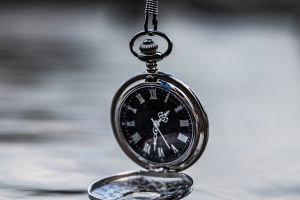Hey Lykkers! Let’s chat about something that sounds almost too good to be true—can the brain actually heal itself?
You might have heard stories of people recovering from brain injuries or strokes and wondered if the brain can repair damage on its own. The answer? It’s complicated but fascinating, and science has uncovered some amazing ways our brains can bounce back. Let’s dive into the real, authentic facts!
What Does “Brain Healing” Mean?
When we talk about the brain healing itself, we usually mean its ability to recover after injury, disease, or trauma. Unlike other organs like the liver, the brain’s capacity to regenerate is limited, but it’s not zero. The brain uses several mechanisms to adapt and repair, which fall under the concept of neuroplasticity and neurogenesis.
Neuroplasticity: The Brain’s Incredible Adaptability
Neuroplasticity is the brain’s ability to reorganize itself by forming new neural connections. Imagine it like rewiring a circuit board. If one part of the brain is damaged, other parts can sometimes take over its functions.
This concept is supported by decades of research. For example, after a brain injury damages a specific brain region, rehabilitation therapy can help “train” other parts of the brain to compensate, allowing patients to regain lost skills. Studies like those reviewed by Kleim and Jones (2008) in The Journal of Speech, Language, and Hearing Research have shown that targeted therapies can stimulate neuroplasticity to improve recovery.
Neurogenesis: Growing New Brain Cells
For a long time, scientists believed adults couldn’t grow new neurons, but groundbreaking studies in the 1990s changed that view. Research by Elizabeth Gould and Fred Gage showed that neurogenesis—the birth of new neurons—occurs in specific brain regions even in adults, especially in the hippocampus, which is vital for learning and memory.
However, neurogenesis is limited and doesn’t happen everywhere in the brain. Its role in recovery from injury is still being explored, but it’s clear that encouraging new neuron growth can aid healing and cognitive function.
How Does the Brain Heal After Injury?
When brain tissue is damaged—by trauma or disease—the area around the injury can sometimes reorganize. Here’s what happens:
- Inflammation and clean-up: The brain removes dead cells and debris.
- Neuroplastic rewiring: Undamaged neurons create new connections to bypass injured areas.
- Neurogenesis activation: In some cases, new neurons are born to replace lost cells.
A 2019 study in Nature Reviews Neurology highlights that while complete repair of lost brain tissue is rare, these mechanisms significantly improve functional recovery.
What Can Help the Brain Heal?
You might wonder, “Is there anything I can do to boost this natural healing?” Science says yes!
- Physical exercise: Regular aerobic exercise promotes neurogenesis and improves cognitive function.
- Mental stimulation: Learning new skills and challenging the brain can enhance neuroplasticity.
- Good sleep: Sleep helps consolidate memories and supports brain repair.
- Healthy diet: Nutrients like omega-3 fatty acids support brain health.
- Rehabilitation therapy: Tailored physical and occupational therapy is crucial after brain injuries.
The Limits and Future of Brain Healing
While the brain has remarkable repair abilities, it’s not a super healer. Severe injuries often cause permanent damage. Researchers are exploring new treatments like stem cell therapy, brain-computer interfaces, and neurotrophic factors (proteins that encourage nerve growth) to enhance brain healing.
Final Thoughts
So yes, the brain can heal itself to a surprising extent, thanks to neuroplasticity and neurogenesis. But healing depends on the injury’s severity, timely intervention, and supportive care. Understanding these natural processes helps doctors develop better therapies and gives hope to millions recovering from brain injuries.
Your brain’s resilience is truly one of nature’s wonders—take care of it!


